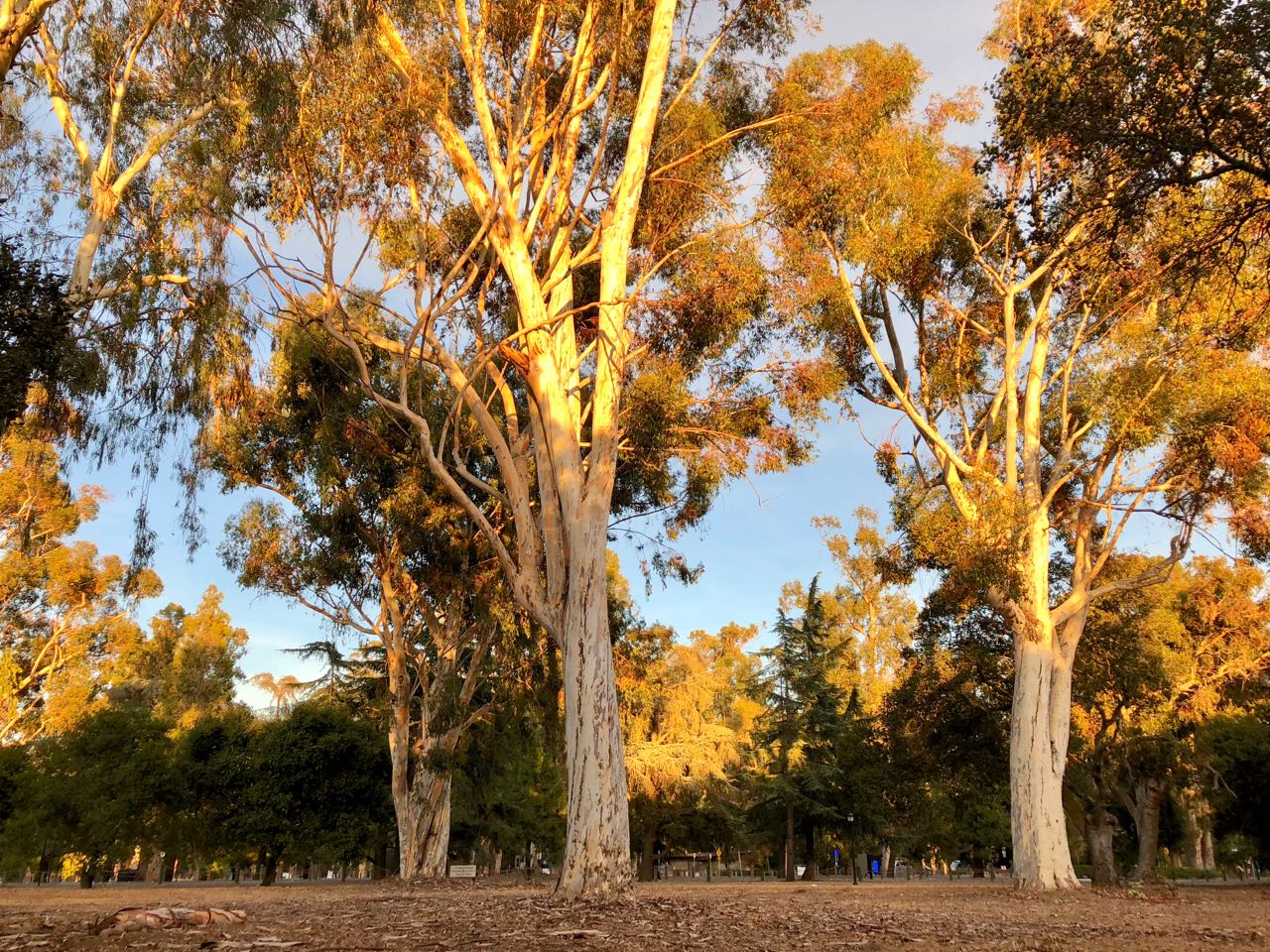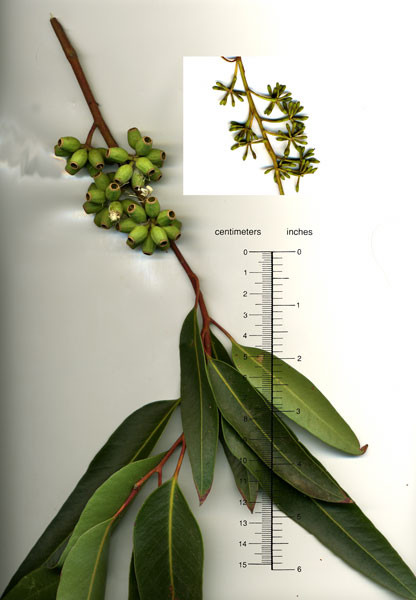Eucalyptus cladocalyx
 sugar gum
sugar gum

When plantation testing was at its height in California, sugar gum was fourth in popularity, amounting to about one tree in 25. So although old specimens are not common today, nevertheless there are always some not far away. A grove of large old sugar gums is situated on the north side of Campus Drive between Palm Drive and Quarry Road. The tall smooth boles are free from lower branches and are in many cases recognizable on sight by warm-colored bark, with long vertical fissures and horizontal rows of dimples left over from insect bites years ago.
On the ground you can pick up distinctive barrel-shaped fruit in clusters of up to 15 in number; these clusters in themselves suffice to give you confidence that you are under a sugar gum the next time you see them among the ground litter. Pampas Lane, opposite the Credit Union, offers a chance to test this claim. There are nine well-spaced specimens in the southwest corner of Lasuen Street and Campus Drive, where some natural regeneration was occurring in 2002.
Other special features are the round juvenile leaves, about 2 inches in diameter, and the quaint opercula, but these are harder to find.
Illustrations: buds | capsules.
Related material: Eucalyptus checklist.
About this Entry: The main text of this entry is from the book Trees of Stanford and Environs, by Ronald Bracewell, published 2005.




